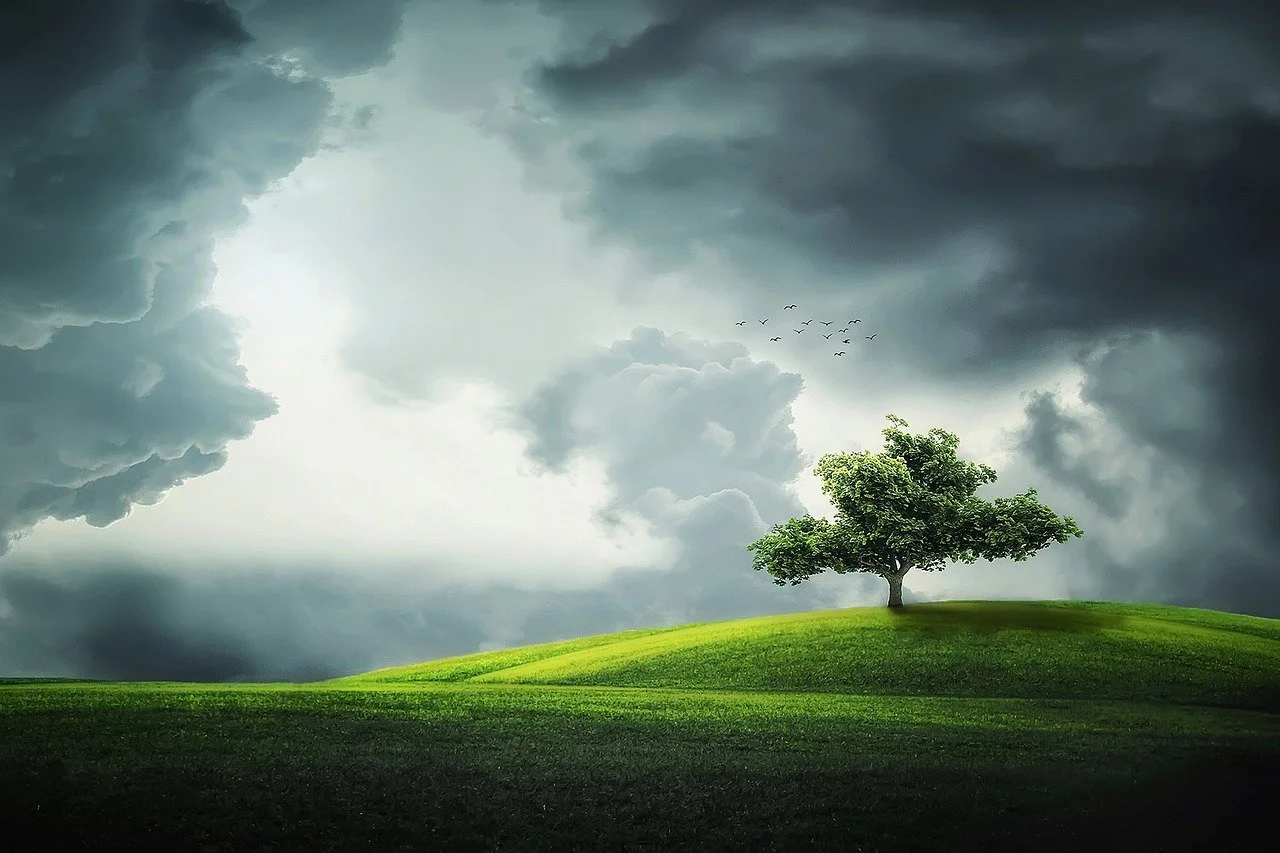Cultivating Hope
In 2019, Vice profiled a man that analyzed and calculated the odds of societal collapse. Reading the article, I was struck by both the intensity of the work and how the man remained hopeful with a position based on exploring worst-case scenarios.
The word “hope” is often used in conversations about crises and disasters and is worth analyzing as it relates to our ability to sustain our ability to work amidst the climate crisis while managing our emotions.
To start, consider that we do not hope for things we know will happen. Hope only exists in spaces of uncertainty. For example, you do not hope that your house will not fly up and out of Earth’s atmosphere while you sleep. You know this will not happen. You may hope that it won’t rain tomorrow. You may hope that you will do well in a test next month. But you do not hope that the Earth won’t fly into the sun tomorrow because you are confident that it will not.
This highlights the first of 5 principles of hope.
Principle 1 of Hope: We only hope for things that are uncertain.
In the above examples, you will notice that some of the things we hope for we have more control over than others. We cannot influence whether it rains tomorrow in any meaningful way (unless you are a nation state), but a test a month from now you do. Here we can distinguish between two types of hope*:
Passive Hopes – Concerns that you hope will change but cannot or will not actively work towards changing
Active Hopes – Concerns that you hope will change and will actively work towards changing
Principle 2 of Hope: Hope can be Passive or Active
The climate crisis creates a never-ending list of problems to contend with and it is easy to feel a sense of responsibility for all of the issues, becoming overwhelmed and paralyzed. To avoid this, it important that we strike a balance between what we passively and actively hope for (Hasan Minhaj has a great skit relating to this at the 5:50 mark). What balance looks like is different for everyone, but if you have a long list of things in the Active Hope category and none in the Passive Hope category, you may be taking on too much.
Principle 3 of Hope: We need to find a balance between Active and Passive Hope
Take a few moments now and write down some of the things that you hope for regarding the environment. Next, imagine there are two buckets, one labeled Active Hope and the other Passive Hope. Categorize each of your hopes as being in the Active or Passive Hope categories and imagine placing them into their respective buckets. Note that Passive Hope doesn’t have to be things that are beyond your control, but can be simply things that you are not going to put energy towards now.
Hope is an expression of our values and this exercise can help clarify what environmental issues you want to focus on. What you put in the Active Hope category is to put our values into action. These values may change or be reprioritized later as who we are and what we do is dynamic and changing. As stated in the Values Assessment however, you are not trying to predict who you will be twenty years from now. We are clarifying who you are and what you care about right now
Principle 4 of Hope: Hope is dynamic and reflects our values
Once you are clear on what your hopes are, start looking for ways to become involved. There are well over 15,000 environmental organizations in the U.S alone (arguably too many) so there is no shortage of places to join to funnel your Active Hope energies into. Consider starting locally where you can most easily see the difference your actions make which in turn will serve to motivate and inspire you to continue to work. See The Truth About Green Jobs and Researching Occupations sections for inspiration.
Principle 5 of Hope: Hope needs to be cultivated through action
To end with, I have provided an example of the above exercise:
I see headlines about the bleaching of corals and my heart bleeds for the loss; yet I dislike swimming, almost died sailing, and live over a thousand miles from any coral reefs. I will put “coral bleaching” in the Passive Hope category. I may move it to the Active Hope category if approached to run a counselling group for marine biologists or consult with activists in the field, but this is not where I typically focus my efforts. I also put am concerned about plastic waste in the Passive Hope category not because I don’t recycle, but because I know that recycling has minimal impact on the problem of plastic wastes (and is primarily a marketing effort by the oil and plastics industry) and do not have the time to dedicate towards regulating and reducing plastics production.
By contrast, when it comes to instructing counsellors on climate-aware therapy and creating career resources to aid the environmentally-minded, this is something I have long been concerned with. I hate to see people uncertain of how to help the environment feeling paralyzed and doing nothing. I place this in the Active Hope category and cultivate it through this guide as well as my work as a career counsellor and teacher. I also care about access to healthcare for the global poor that are most vulnerable to climate disasters and direct monthly donations towards charities that help address this.
*The clarification of Passive and Active Hope is based on the work of Thomas Homer-Dixon and his excellent book Commanding Hope.
